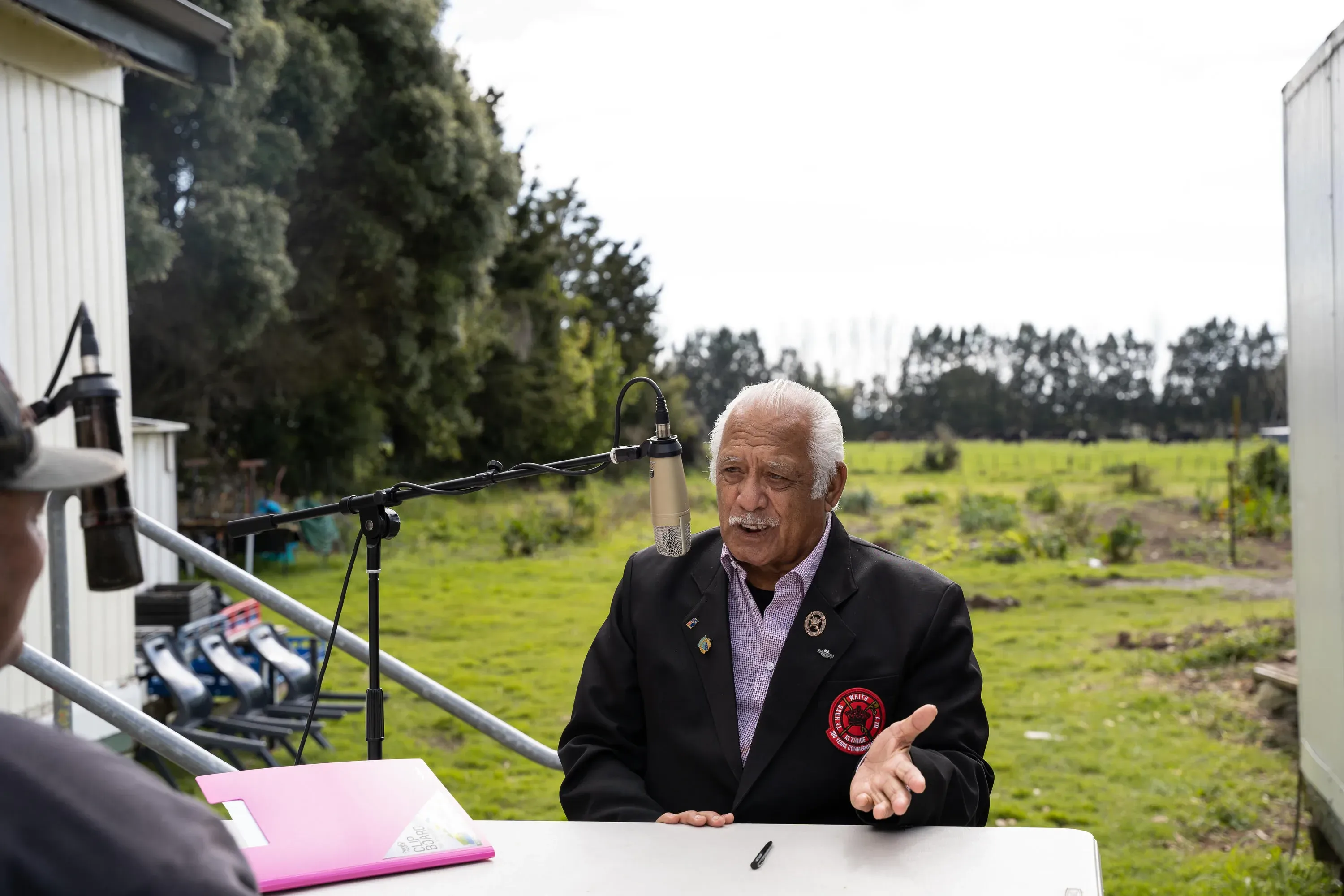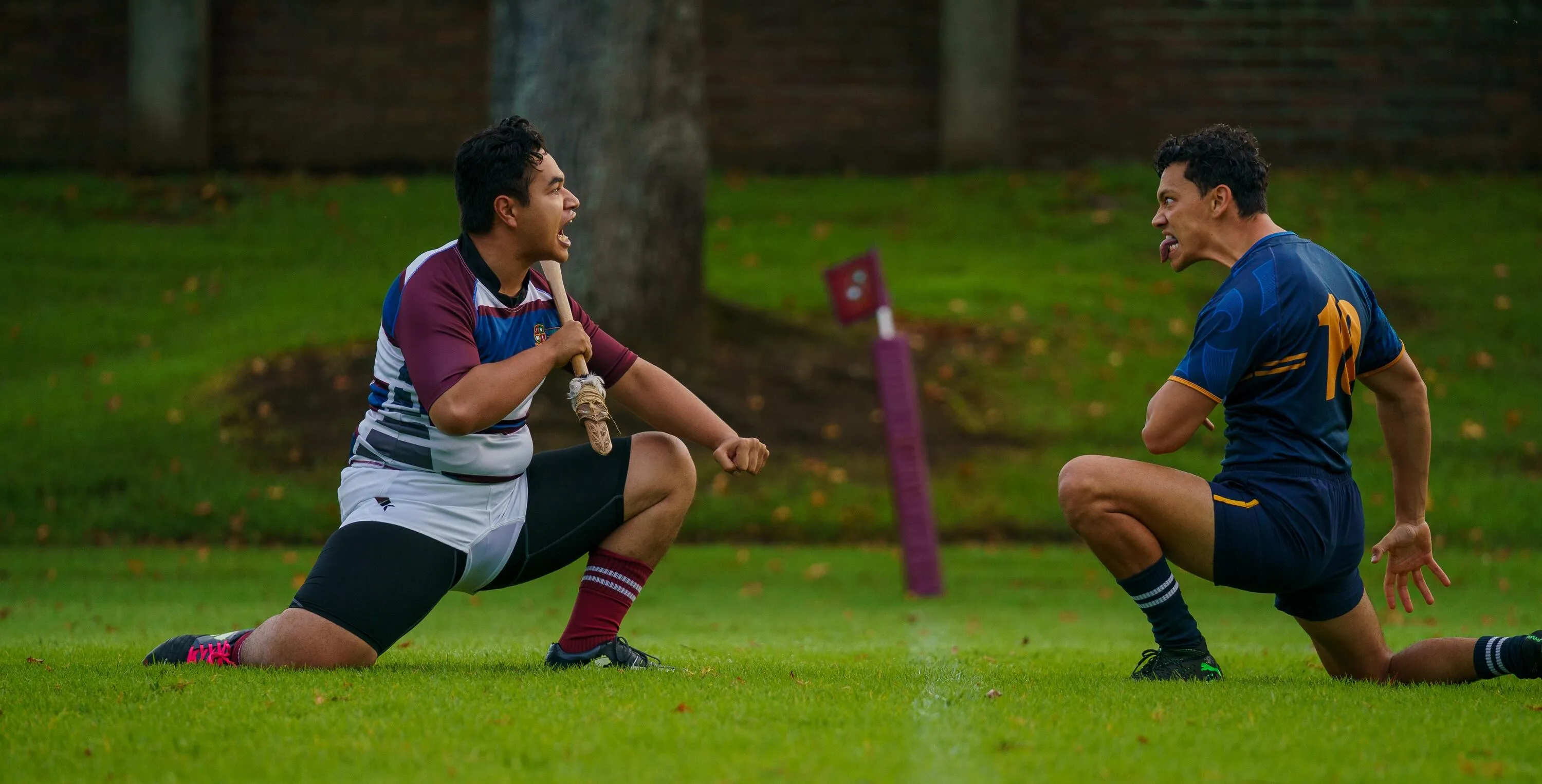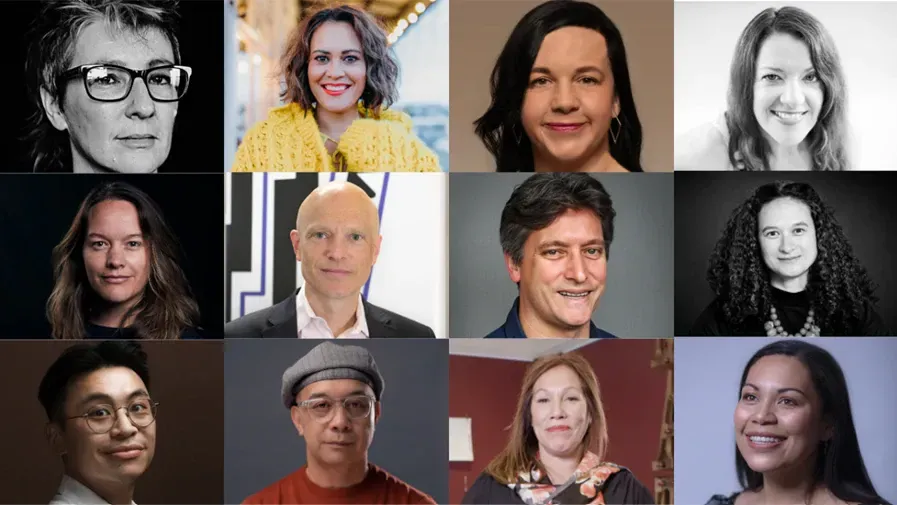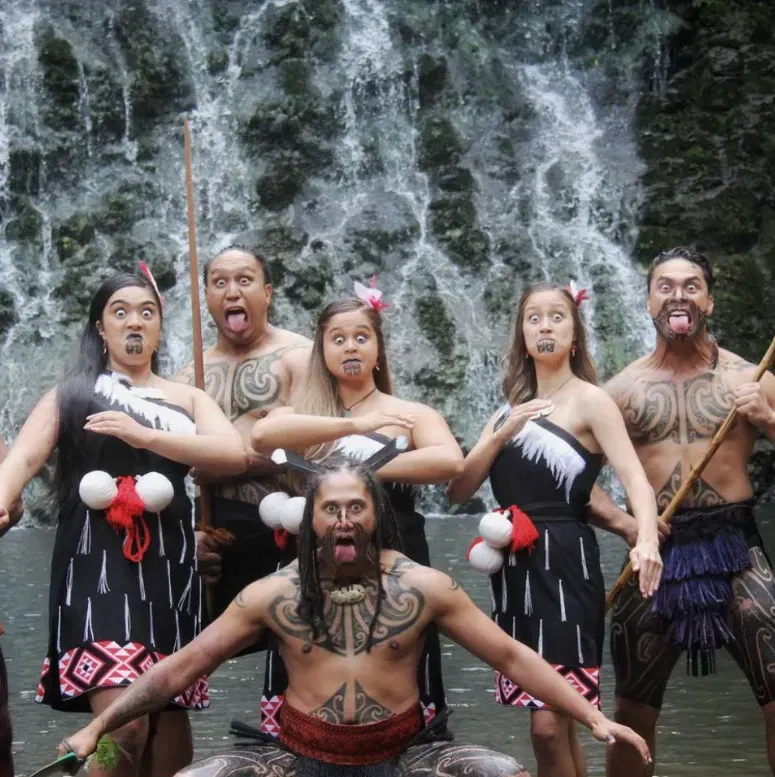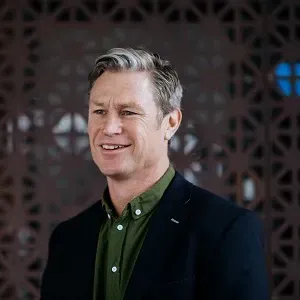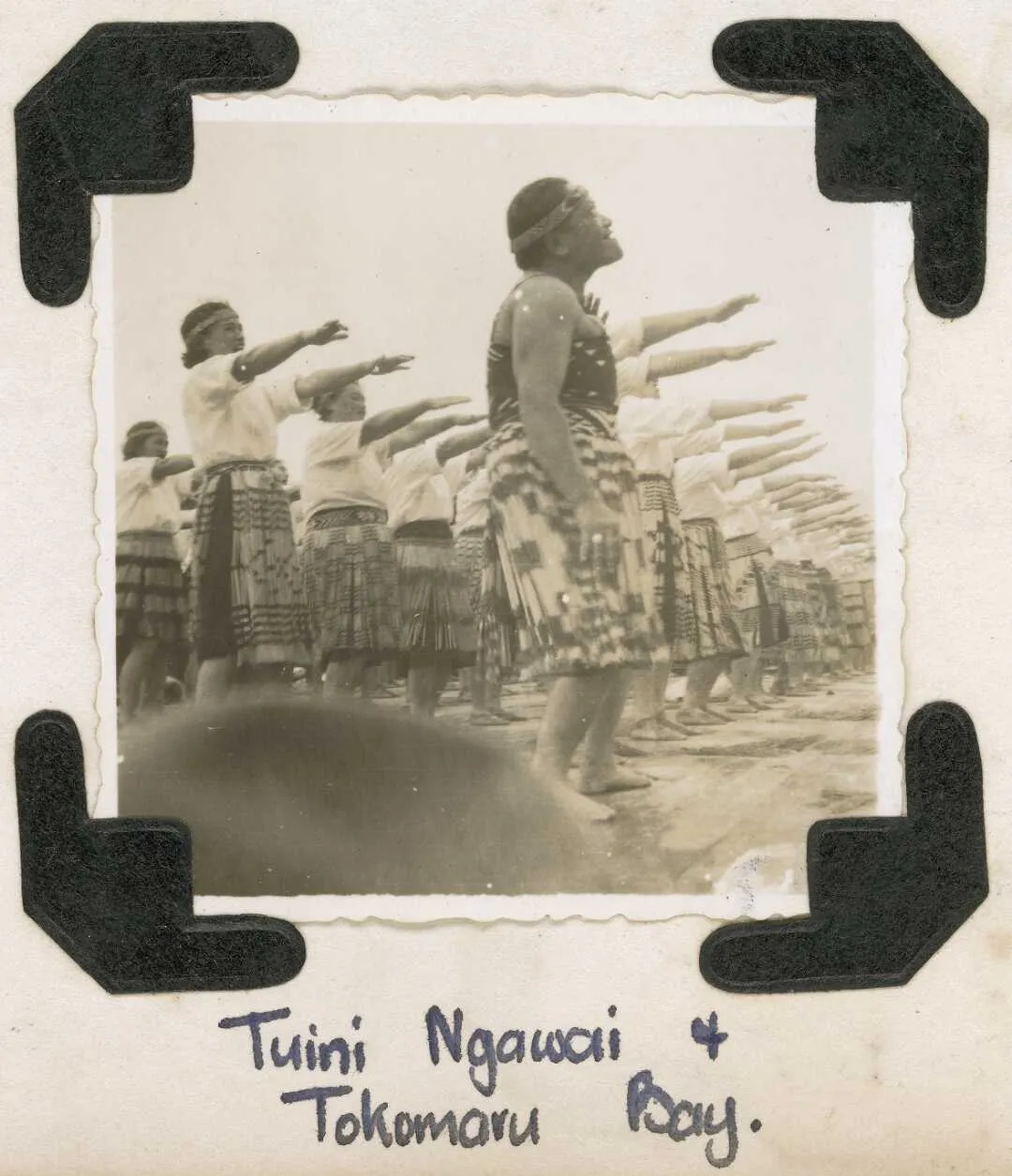Why Mainstream Representation Matters
Written by
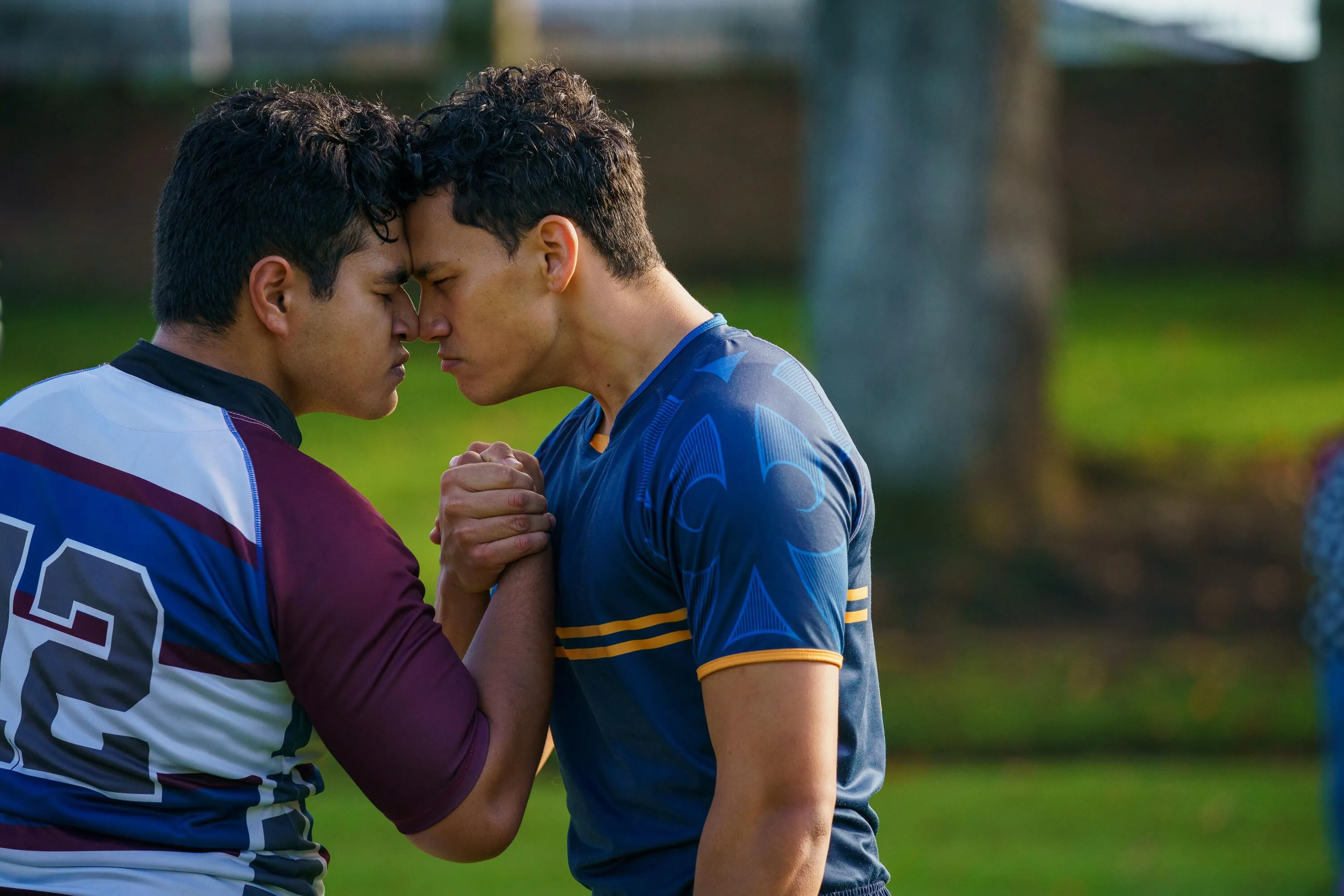
There is something special about Te Wiki O Te Reo Māori.
The evolution of what could once be considered a ‘token’ language week into a prevalent, all-encompassing acceptance and celebration of a language that is snowballing in relevance on a constant basis.
More people who call Aotearoa home are comfortable with speaking and understand te reo Māori as a result of this annual seven day event. It gives people who would normally never try to use the language the encouragement to give it a go. It means that the nation’s appreciation of Matariki is more than just a freshly-minted public holiday.
And the creative community plays a pivotal role in this.
Is there room for improvement? Damn right.
It would be naive to say there are not those who look to exploit weeks like this, or give it the ‘once over lightly’ treatment.
There is an ongoing and still crucially important conversation about how many feel the opportunities to learn te reo Māori should be prioritised for the generation of Māori whose parents and grandparents literally had the language beaten out of them. These are feelings that require the utmost respect - it’s a conversation that needs to be led by those who have lived it, not dictated to from those outside it.
But for those who see success for the language to be the nation’s ability to embrace it - even if they don’t fully understand it - then there’s no doubt this week plays a huge role.
As Jack Gray explained as he laid his soul bare in his thinkpiece Waking Up Māori Again - Why This Kōrero Matters “It is the work of normalising the fullness of Te Ao Māori.”
This week, it’s commonplace to hear hit songs sung in te reo Māori as you flick through radio stations, websites temporarily rebrand themselves with Māori translations of their name, to see otherwise untold stories like Mike McRoberts personal and revealing Kia Ora Good Evening documentary. Hell, you’d even notice the spike in te reo Māori on Shorty Street.
Much of that - if not all - is done with good intentions. Almost all of it is done with funding support.
It costs money to help grow te reo Māori in mainstream - and requires encouragement.
This is to take nothing away from the incredible mahi done by the likes of Whakaata Māori - Māori TV - Marae, E Tangata, Radio Waatea and the many other media organisations that drive te ao Māori as their central kaupapa. Their value is unquestionable, their commitment unwavering.
But the predominant TV, radio and even online institutions have the ability to reach an audience that - in general - needs more prompting to be part of this reo revolution.
That’s where the likes of NZ On Air and Te Māngai Pāho come in.
Blake Ihimaera, Te Māngai Pāho's Pou Ārahi Kaupapa Head of Content told The Lowdown “our mission as an agency is to promote and revitalise te reo Māori in Aotearoa. To ensure te reo Māori is seen, and heard in all spaces requires every single one of us to take part and actively participate in its distribution.
“From broadcast partners to content creators and social media users alike, we are proud of the collective effort we have achieved this far, and are excited for what lies ahead for us as a nation. Kia kaha te reo Māori, ko te reo te take.”
In the past financial year, Te Māngai Pāho spent almost $21 million across 34 projects in mainstream media - with the likes of TVNZ (including its many iterations like TVNZ ondemand and Re: News), Three, Stuff, NZME and RNZ.
A big part of that funding goes to the mainstream staples like TVNZ’s Te Karere ($2.5m), Marae ($1.6m), Waka Huia ($1.25m) and Three’s The Hui ($965,000). There are some prominent reality-based shows too like Three’s Match Fit season 2 ($1.87m) and the sixth season of TVNZ’s The Casketeers ($598,000).
All Te Māngai Pāho’s funding is broken into two categories - receptive or fluent. Receptive means that it must be between 30-70% te reo Māori and fluent is 70-100%. Of the 38 projects working with mainstream media (the 34 above plus four other projects aired this week), four fit the fluent category.
Anything less than 30% is funded by NZ On Air.
But while the support and opportunity for mainstream media to create shows that integrate te reo Māori into everyday storytelling is strong, keeping it in primetime is no easy feat.
You’d struggle to find a drama series in this country more successfully or seamlessly interweave te reo Māori into its scripting and the fabric of the show than the excellent Head High - which aired two well-crafted, multicultural and inclusive seasons on Three (funded by NZ On Air).

Lionel Wellington and Jayden Daniels play brothers in Head High. Photo: South Pacific Pictures.
That’s before it was dropped - as new owners Discovery’s largely overseas-based decision makers were starting to make changes to the network - with poor ratings cited as a reason.
There are a multitude of reasons why this would be hard to swallow - TV ratings don’t take into account streaming views, which many would argue would be where most of the target audience would have consumed such a show.
Even if accurate, Head High was an example of a TV station taking a stand to support local content (that wasn’t reality-show based) and putting our culture, our issues, our stories in a sought-after weekday evening spot. Its demise has left a hole for such programming.
Head High star Miriama McDowell (Ngāti Hine) - who has won acclaim for her film portrayal of Dame Whina Cooper in this year’s Whina - told The Lowdown the use of te reo Māori on the TV show was “a game changer in our industry.”
She explains “it placed a non-Pākeha family frontstage centre for the first time in a mainstream drama since the seventies. For me, the te reo Māori in the show was important. It showed the spectrum of Māori speakers. Often we see people who are fluent speakers or non-speakers, but of course there is a whole range in between.
“In Head High, we see a Mum who speaks less than her kids, because they’ve had the privilege of going to Kōhanga and bilingual schooling. It shows a Pākeha husband who is comfortable with tīkanga, because it’s been part of his household. We see rangatahi who mihi, karakia, waiata, haka, because in certain moments, that’s the best way they know to express themselves.
“It’s the phrases on the fridge, the words and phrases scattered through the scenes, and even the calls from the crew on set, that did it for me. This is how we see ourselves, this is how we feel seen and represented.”
Head High’s creators South Pacific Pictures still get regular inquiries from the public about when/if the show will return - interestingly, including many from Australia where the show also resonates. The Lowdown understands the possibility of Head High’s resurrection still exists, with other broadcasters thought to have an interest in it.
There are strides being made in normalising te reo Māori in many areas of broadcast - just as it has in news and current events coverage, scripted dramas in mainstream have the potential to make a big difference.
Hall of fame inductees
A pair of pioneering wāhine toa are being given their moment in the sun - and it’s a whānau affair.
The late Te Kumeroa “Ngoingoi” Pēwhairangi (Te Whānau-a-Ruataupare, Ngāti Porou) and her beloved Aunty Tuini Moetū Haangū Ngāwai (Te Whānau-a-Ruataupare) are the latest inductees in Te Whare Taonga Puoro o Aotearoa the New Zealand Music Hall of Fame, taking place at next month’s Kaitito Kaiaka Silver Scroll Awards.
Fitting to be announced during Te Wiki O Te Reo Māori, the duo’s roles in revitalising Māori language and culture through waiata, kapa haka, and composition - as well as their role in supporting the Kotahitanga movement - are highlighted in their induction.

Photo: Alexander Turnbull Library.
Ngāwai’s songwriting talents stretched across more than 200 waiata throughout her lifetime and played a crucial role in the landscape of our country. Her songwriting involved everything from love, death, war, to informal sing-a-longs written during her time in shearing gangs. Ngāwai wrote many of her finest songs during the war, with Arohaina mai e te Kingi Nui considered her masterpiece, which became the unofficial hymn for the Māori Battalion’s Ngāti Porou C Company soldiers.
Former Māori Development Minister Sir Apirana Ngata saw her special nature, appointing her as a teacher specialising in Māori culture, teaching East Coast tamariki about their culture through song and performance.
Her invaluable contributions to kaupapa Māori through waiata and performance formed paths for following generations to continue uplifting the culture through music.
Pēwhairangi - affectionately known as Ngoi - continued her aunt's legacy, collecting and publishing her compositions and carrying on the indelible cultural revival, including publishing the book Tuini: her life and her songs (1985).
While she is best known for co-writing hits with high-profile Māori artists Prince Tui Teka and Dalvanius Prime - including the iconic Poi E and E Ipo - Pēwhairangi composed many widely beloved waiata. She is also deeply respected across the East Coast community as a leader, spiritual bastion, and youth advocate, and is a profound influence on many current Māori songwriters.
Pēwhairangi too was integral to reo Māori education, having co-founded Te Ataarangi alongside Katerina Mataira - a method of learning and teaching the reo in homes and on marae that still operates today. Alongside forming Aotearoa Moana Nui a Kiwa Weavers, a kaupapa to help foster and preserve traditional weaving techniques, Ngoi was also a foundation member of the Council for Māori and South Pacific Arts, serving until her death.
To be inducted together surely an appropriate and a proud moment for their whānau.
Haere rā, traffic lights
Few words made the stomachs of those in the creative industries who rely on audiences drop more than the phrase “traffic light system” in the past two years.
"Lockdown” and “pandemic” will probably hold top spot for the rest of their natural-born lives but the impact that came with Red light and even Orange light on their ability to perform and earn a living has been unrelenting.
Their introduction was a monumental landscape change that dominated all discussion - their removal has barely caused a whimper.
As of Tuesday morning, the COVID Protection Framework has been removed, with all Government-driven mask wearing regulations scrapped for all outside of the healthcare industry. As of 26 September, the vaccine mandates are gone too.
The framework has been removed from the Arts and Culture Event Support Scheme, which will continue to be available until 31 January 2023. The payment eligibility has been updated to cover for registered events that are unable to go ahead, or experience overall financial loss, as a direct result of Government restrictions in response to COVID-19 or as a direct result of lead performers having to isolate.
But it all has barely caused more than an eyebrow raise in the performing arts sector.
The Lowdown contacted a range of organisations to see if this milestone would have any impact on their day-to-day mahi. Virtually all suggested it barely caused a ripple, some with “too much on their plate to care right now” and others just generally nonplussed.
This is a marked departure from previous times of guideline changes…and that’s a good thing. It’s a clear sign the hysteria has died out and everyone has settled - or is that settling - into their new normal. An attendee at Silo Theatre's The Writer at Q Theatre this week commented there was barely a mask in sight.
Remember when we all used to plan our day around Government announcements? Yeah, we don’t miss it either.
Resetting the stage

There’s far more pressing things on the mind of the performing arts community - as many look forward to the long-awaited return of the PANNZ in-person meeting on 23 September.
The online versions have been a hit. But let’s be honest, for an industry that relies on the immersive experience that you can only get being there live - nothing beats in the flesh.
It’s proven to be a key networking event for producers, performers and creatives alike and has another stellar line up of arts practitioners on show. MC’ed by the wonderful Jo Randerson and the previously mentioned Miriama McDowell the keynote speaker, the likes of Anna Cameron, Amber Curreen, Nathan Joe, Nina Nawalowalo, Tānemahuta Gray, Elyssia Wilson-Heti and new Arts Laureate Hone Kouka will be among panellists providing insight into the challenges and opportunities facing the performing arts. Manatū Taonga’s Deputy Chief Executive Joe Fowler will also be among the speakers.
For those who took part in the digital market back in February-March, there’s no charge for entry (but you do need to register here) and if you missed that, you can still be part of the in-person event from just $20.
There are definitely some positive vibes seeping back into the performing arts, as this week’s fundraiser for Nightsong showed.
Despite the ease to hold onto the doom and gloom, the endless frustrations and heartbreaks of the past few years for everyone involved - those who attended Monday night’s rally of supporters spoke of the energy and enthusiasm for what lies ahead for the Ben Crowder and Carl Bland-led organisation. As Board Chair Greg Fahey proclaimed “at Nightsong, challenge is our middle name.”
With recent successes including children’s show The Worm, the Auckland Art Festival debut of Stab in the Dark (shifted to digital at the 11th hour) which has recently been shown at a Romanian Arts Festival, and acclaimed work Te Po turned into a radio play for RNZ - as well as new board members Janet Clarke, Mile Fane and Helen Atkins - things are looking bright.
Over to you, Aotearoa
As of Tuesday, it’s open and the creative community is invited to have their say on where the $28 million should go.
Over 70 initiatives are up for the first of four rounds - including one from The Big Idea - and MCH is seeking the thoughts of those who stand to benefit from the initiatives or have relevant and recognised expertise in the fields the proposals focus on.
The first round feedback window runs until 11.59pm on 26 September - to take part, click on this link.
Copy that

The person to fill the metaphorically big shoes of the highly-regarded Paula Browning at Copyright Licensing New Zealand (CLNZ) has been found.
Sam Irvine (above) will become Chief Executive of CLNZ in a month’s time as Browning steps down after an impressive 12 years in the role.
Irvine comes with a wealth of leadership experience in a range of organisations, including as Managing Director of Badger Communications, Chief Operating Officer of Isthmus Group and senior positions at Freeview, New Zealand’s free-to-air digital television and radio platform.
“I’m excited to lead CLNZ, an organisation that places real value on people and culture, into the next phase of growth,” Irvine states.
“I’m passionate about using technology and design to improve the way we do business and live our lives. My experience in this space aligns well with the next big step for CLNZ and I’m looking forward to the development and rollout of technology that will help creative people in Aotearoa New Zealand manage their rights in their work.”
More is never enough
Just in case you hadn’t come across enough Te Wiki O Te Reo Māori content and events - we thought we’d outline a few options for you.
If you haven’t already - get out to see Muru in theatres - written and directed by Tearepa Kahi with top Māori acting talent like Cliff Curtis, Manu Bennett, Simone Kessell and even Tame Iti playing himself. It’s recently been shown at the Toronto International Film Festival.
The Big Idea has already heard from several vocal advocates for te reo Māori and Toi Māori in the form of singer/songwriter Theia (under her TE KAAHU project) and visual artist Dr Benjamin Pittman.
Creative Bay of Plenty and Film Bay of Plenty have collaborated to produce three special podcasts to mark the week - all entirely in te reo Māori - joining forces with presenter Tihini Grant and local immersion school Te Kura Kaupapa Māori o Te Kura Kōkiri.
They feature Beyond the Veil actress Kataraina Howden-Borell, Waka Huia production assistant Te Manawa Tumoana and Hemana Waaka (below), the world’s first sports commentator to present in te reo Māori.

Photo: Billie Scott.
TVNZ+’s Te Ao Māori section is always bristling with options, You can track down the outstanding Cousins on Netflix, NZ on Screen has some archival gems and if you have an interest in how taonga Māori is protected, Te Papa’s Nga Taonga Tuku Iho offers an insightful discussion.
You can get out and learn more about our history - perhaps from a different perspective than you learned at school if you’re of a certain generation - by visiting the New Zealand Portrait Gallery’s He Riri Awatea: Filming the New Zealand Wars.

And nothing beats getting out and experiencing te ao Māori for yourself. Wherever you are across the motu, seek out a performance or chance to be part of the moment. For example, in Tāmaki Makaurau there’s a free performance and workshop with kapa haka troupe The Haka Experience (above) that includes the chance to try some Toi Māori and add some new te reo Māori kupu (words) to you and your whānau's vocab.
So soak up and enjoy the cultural offerings of Te Wiki O Te Reo Māori; broaden your knowledge and appreciation for something unique to our country. But don’t forget, this isn’t Christmas - it doesn’t have to happen just once a year.
